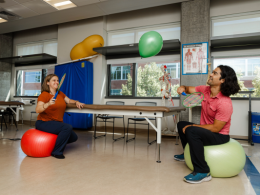Diverse staffing is no longer just a buzzword—it’s a critical factor that directly impacts patient care outcomes.
When healthcare teams represent a mix of backgrounds, experiences, and perspectives, patients notice the difference.
Years ago, I worked at a hospital in Queens where over 60 languages were spoken by staff.
That kind of representation didn’t just make communication easier—it built trust, especially with immigrant families who often felt overlooked elsewhere.
How Does Diversity Work In Healthcare: An Overview
Diverse Staffing in Healthcare mainly includes a broad range of factors. This comprises:
- Race
- Ethnicity
- Gender
- Socioeconomic Status
- Cultural background
Recently, healthcare organizations have started recognizing the overall necessity of building a diverse workforce.
The aim? Firstly, to improve the overall quality of patient care and secondly, to increase the efficiency in healthcare delivery.
However, there can be challenges when you are trying to achieve workplace diversity and democracy, which can further serve the entire community.
Now, it is necessary for healthcare organizations to find out the gaps and further work on them, particularly those who are at the leadership and decision-making levels.
The Link Between Representation and Trust
When patients see providers who look like them or speak their language, it changes the dynamic.
A Nigerian woman I met during a home health visit once told me she hadn’t seen a doctor she could relate to in years—until she walked into our clinic.
She teared up when she realized the nurse spoke Yoruba. At that moment, it felt like it is not emotional anymore! It was more healing for her, for all of us!
Cultural awareness can drastically reduce patient anxiety. Moreover, it can increase treatment compliance and improve satisfaction scores.
Healthcare isn’t one-size-fits-all, and neither are patient experiences. Now, imagine if every healthcare setting prioritized diversity in hiring.
It’s not just morally right—it’s practically powerful.
Diverse staffing is proven to improve outcomes across various settings by aligning care with the unique needs of patients.
Broader Perspectives Drive Better Decisions
In healthcare, decisions are made under pressure.
Having a team of professionals from various backgrounds ensures multiple lenses shape those decisions.
I remember a staff meeting where a Filipino RN challenged a proposed protocol for stroke patients, highlighting dietary and language issues common in Southeast Asian communities.
That input changed how we handled stroke rehab for non-English speakers.
The result?
Higher recovery rates and fewer readmissions in those groups. Diversity in thought, when supported, creates safer environments and smarter solutions.
Workplace diversity promotes collaboration and respect, as staff learn from each other, leading to higher job satisfaction and lower turnover. An inclusive culture encourages contributions from team members, valuing their perspectives.
In summary, diverse staffing improves patient care outcomes through enhanced
- Cultural competence and personalized care,
- Improved communication and trust,
- Better decision-making and innovation,
- Addressing health disparities, and
- Fostering a positive work environment
Language Access and Patient Safety
Language barriers are a known threat to patient safety. But with a multilingual staff, those barriers shrink dramatically.
When I worked in a city ER, Spanish-speaking staff were the bridge between confused families and critical care instructions.
- No one was guessing what the patient meant.
- No one was fumbling through Google Translate.
- Accurate care begins with accurate understanding.
- And diverse teams bring that to the frontlines every day.
Staff Retention Improves with Inclusion
One thing people overlook: diverse staffing isn’t just about patients. It’s about the staff experience, too.
When people feel seen, respected, and represented in their workplace, they stay.
Back in 2019, I helped onboard a team of nurses from different cultural backgrounds to a community clinic.
Not only did our turnover rate drop, but engagement soared. Staff felt safe speaking up. Ideas flowed more freely.
That’s inclusion at work—and it’s a win for everyone, especially patients.
One thing I believe that it would be a crime to overlook is the improved communication and cultural competence.
The diverse healthcare teams have more competency to understand and further connect with the patients who come from various backgrounds.
This even includes different languages, beliefs, and cultural practices. Once you can establish diversity, it becomes easy for you to:
- Enhance further communication
- Build trust
- Provide tailored and more effective treatment plans.
Moreover, a well-established diverse workforce can also help to address the health disparities, which are mainly experienced by the minority and marginalised populations.
With an effective diverse workforce, you can provide culturally sensitive care that is more responsive to their specific challenges and needs.
Diverse Teams Reflect the Communities They Serve
Take any major U.S. city and look at its population. Then look at who’s staffing the hospitals. If those two groups don’t match, there’s a gap.
That gap leads to missed nuances, delayed trust, and uneven care. A clinic in South Los Angeles ran into this issue.
Too few staff spoke Spanish, despite nearly 80% of patients being Latino.
Once they diversified their hires and improved language access, patient wait times dropped, and feedback improved overnight.
Representation matters. It saves time. It saves lives.
Cultural Competence Reduces Errors
Cultural misunderstandings are very toxic, in my opinion. It can possibly lead to some massive medical errors. You can think of it like dietary restrictions and religious practices, or how pain is being described across all the cultures.
One of the biggest lessons I learned early in my career was to ask before assuming. And it helps when your team already has someone who understands these nuances firsthand.
A Muslim nurse on our team once prevented a major issue during Ramadan by catching a fasting-related oversight on a patient’s chart.
That’s the kind of insight you can’t teach in a crash course. You need it to live, and lived experience comes with diverse hiring.
The Future of Healthcare Depends on Diversity
As the population gets more diverse, so must the care. We’re seeing it in urban and rural hospitals alike. Telehealth? Still needs culturally competent providers.
Home care? Demands language access and cultural sensitivity. The shift isn’t optional anymore.
Healthcare systems that prioritize diverse staffing today will lead tomorrow. They’ll be the ones building trust, improving outcomes, and creating safer environments for both staff and patients.
READ MORE:









